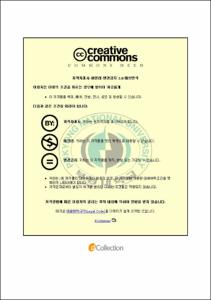남해안 지역의 주요 비브리오균 분포현황
- Alternative Title
- A Distributional Analysis of Vibrio spp. in the Southern Coast of Korea
- Abstract
- 담수에서 해수에 이르기 까지 넓은 수역에서 분포하고 있는 Vibrio spp.는 현재 40여종이 분리되었고 그중 12종은 사람에게 병원체로 작용하며, 식중독이나 심각한 비브리오 질환을 일으키는 균으로 알려져 있다.
따라서 본 연구는 12종의 병원성 Vibrio spp.에는 해수에 널리 분포하고 있고 가장 문제가 되고 있는 V .cholerae, V. cholerae non-O1, V. vulinificus 및 V. parahaemolyticus 등 4종에 대하여 우리나라 남해안 지역인 부산, 마산 및 통영지역의 해수를 대상으로 월별, 지역별 분포현황을 조사하고 그 결과 분석을 통하여 Vibrio spp.에 의한 질병이나 식중독을 예방하는 국가적 감시체계를 마련하여 국민건강과 수산업종사자를 보호함으로 인적 및 경제적 피해를 최소화 하는데 기초 자료를 제공하고자 하였다.
조사기간은 2006년 3월부터 11월까지 9개월간 매월 2회씩 810건의 해수를 채취하였으며 온도, 염도, 탁도, pH 등 일반적인 수질검사를 실시하였고 Vibrio spp.의 분리동정을 위하여 증균배양, 선택배양, 분리배양, 생화학예비시험을 수행하였다. 그리고 API E-20으로 생화학동정을 하였고 혈청시험으로 최종확인동정을 하였다.
먼저 부산, 마산, 통영지역의 수질조사 결과, 수온의 범위는 각각 12.4∼27.1℃, 9.0∼29.8℃, 11.7∼28.5℃이었고, 염도의 범위는 각각 14.0∼37.5‰, 10.0∼37.5‰, 27.0∼35.0‰이었다. 그리고 pH는 각각 7.2∼8.2, 7.0∼8.4, 7.4∼8.2의 범위로 지역적으로 큰 차이는 없었다.
Vibrio spp. 분포는 전체 시료 810건 중 323건(39.9%)으로 V. cholerae 는 분리되지 않았으며, V. choleraenon - 01, 31건(3.8%), V. vulinificus 6건(0.74%), 그리고 V. parahaemolyticus 286건(35.3%)의 분포를 보였다. 지역별로는 부산지역에서 360건의 시료중 V. parahaemolyticus 168건(46.7%)만 분리되었고, 마산지역에서는 288건의 시료 중 V. cholerae non-O1 30건(10.4%), V. vulinificus 4건(1.39%), V. parahaemolyticus 71건(24.7%)가 분리되었고, 통영지역에서는 162건의 시료중 V. cholerae non-O1 1건(0.61%), V. vulinificus 2건(1.2%), V. parahaemolyticus 47건(29.0%)가 분리 되었고, 전체 분리건수 323건 중 6월부터 11월까지의 Vibrio spp. 의 분리건수는 297건(36.6%)으로 특히 하절기부터 가을 까지 비브리오균에 인한 식중독이나 질병 예방에 주의를 기울여야 할 것으로 사료된다.
As a pathogenic bacterium that inhabits seawater or fresh water, 40 strains of Vibrio spp. is so far isolated and reported. In the 40 strains, 12 strains are pathogen to human and cause the severe diarrheal disease and food intoxication.
In this thesis, I focused on 4 strains of seawater inhabited Vibrio spp. named V. cholerae, V. cholerae non-O1, V. vulinificus and V. parahaemolyticus and investigated their distribution based on the location and month. Samples are collected from five, eight and three stations in three different regions, Busan, Masan and Tongyoung respectively. Results of this study provide further insight into the national protection system against Vibrio spp. and help the establishment of public health priorities that might lead to improved regulations and prevention measures at the local and national levels.
The total number of seawater samples are 810 during 9 months from March to November, 2006. The sample was analyzed followed by the guideline of water qualification on the items of salinity, temperature, turbidity and pH. Isolation and identification of Vibrio sp. in the seawater samples are performed according to the guideline to Vibrio sp. issued in KCDC.
The analysis of water qualification reveals that there are no difference between each regions with the average temperature (10.8~28.4 ℃), salinity (18.3~37.0 ‰) and pH (7.3~8.1). The salinity of each region is 14.0~37.5 ‰, 10.0~37.5 ‰ and 27.0~35.0 ‰, pH is 7.2~8.2, 7.0~8.4 and 7.4~8.2, temperature is 12.4~27.1 ℃, 9.0~29.8 ℃ and 11.7~28.5 ℃ at Busan, Masan, Tongyoung respectively.
Among 810 seawater samples, Vibrio spp. are detected in total 323 samples in the case of 31 (3.8 %), 6 (0.74 %) and 286 (35.3 %) against V. cholerae non-O1, V. vulinificus and V. parahaemolyticus respectively. However, V. cholerae is not detected in 810 seawater samples.
Regional distribution of Vibrio spp. presented that only V. parahaemolyticus is detected in 168 stations of 360 stations in Busan. In Masan, 30 (10.4 %), 4 (1.39 %) and 71 (24.7 %) case are detected against V. cholerae non-O1, V. vulinificus
and V. parahaemolyticus from total 288 stations respectively. Similar distribution of Vibrio spp. noticed in Tongyoung with relatively low range against V. cholerae non-O1 (1 staion, 0.61 %) and V. vulinificus (2 stations, 1.2 %) compare to the case in Masan. In Tongyoung, V. parahaemolyticus is detected at 47 stations (29.0 %).
The study of seasonal distribution of Vibrio spp. informed that detection rate of Vibrio spp. are higher from June to November. Therefore, during the time Vibrio spp. are highly detected, public health departments have collaboratively maintained Vibrio mediated disease and outbreak surveillance system for collecting and reporting waterborne disease and Vibrio-related data.
- Issued Date
- 2007
- Awarded Date
- 2007. 2
- Type
- Dissertation
- Publisher
- 부경대학교 산업대학원
- Alternative Author(s)
- Choi, Kyung-Han
- Affiliation
- 부경대학교 산업대학원
- Department
- 산업대학원 산업미생물학과
- Advisor
- 이명숙
- Table Of Contents
- Ⅰ. 서론 = 1
Ⅱ. 재료 및 방법 = 4
2.1 조사정점 = 4
2.2 실험방법 = 7
2.2.1 시료채취 및 조사현황 = 7
2.2.2 Vibrio spp.의 분리 및 동정 = 8
Ⅲ. 결과 및 고찰 = 16
3.1 일반수질 조사 결과 = 16
3.1.1 부산지역 = 16
3.1.2 마산지역 = 18
3.1.3 통영지역 = 20
3.2 Vibrio spp. 분리결과 = 22
3.2.1 부산지역 = 22
3.2.2 마산지역 = 24
3.2.3 통영지역 = 26
3.3 지역별 vibrio spp. 분리결과 비교 = 28
3.3.1 V. cholerae non-O1의 분리결과 = 28
3.3.2 V. vulinificus 분리결과 = 31
3.3.3 V. parahaemolyticus 분리결과 = 31
3.3.4 월별 Vibrio spp. 분리결과 = 34
3.3.5 지역별 Vibrio spp. 분포도 = 35
Ⅳ. 요약 = 36
Ⅴ. 감사의 글 = 38
Ⅵ. 참고문헌 = 39
- Degree
- Master
- Files in This Item:
-
-
Download
 남해안 지역의 주요 비브리오균 분포현황.pdf
기타 데이터 / 816.35 kB / Adobe PDF
남해안 지역의 주요 비브리오균 분포현황.pdf
기타 데이터 / 816.35 kB / Adobe PDF
-
Items in Repository are protected by copyright, with all rights reserved, unless otherwise indicated.